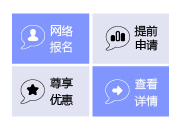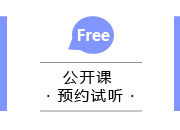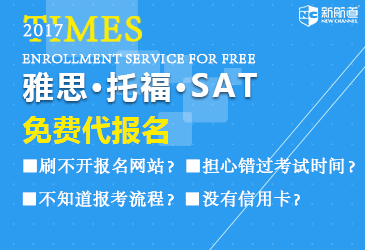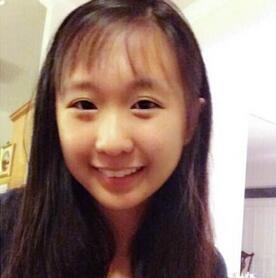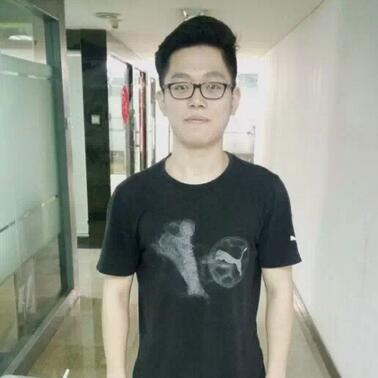供稿单位:互联网 责编:[freemarker标签异常,请联系网站管理员] 浏览 0 次
安徽省东至二中 胡 迪
阅读填空题主要考查学生语言运用能力,可以理解为阅读理解题的另一种形式。阅读填空题要求学生阅读后按照自己的理解进行填空,即用自己的语言来转述原文内容,侧重于考查学生的阅读理解和写作能力。阅读填空题的能力要求在阅读理解题之上、书面表达题之下。其选材主要是注意使用性的说明文和应用文。从形式上看,阅读填空题是阅读理解题的一种形式,但实质上却属于信息收集整理和再创作的语言应用题。
一、阅读填空题的命题特点:
1.这一题型属于主观性试题,因此每道题的答案可能出现多种情况,但不论哪种解答,都必须忠实于原文,即对原文充分理解后的归纳总结,或是在原文中可以找到的信息点。
2.这一题型属于信息的收集、整理试题,不仅是对语言知识层面的考查,还是对语言运用层面的考查。
3.这一题型并非简单的阅读理解题,它还要求考生分析、整理出与短文表述的信息有关的内容,并进行适当的句型转换。
4.该题型不仅考查直接信息的理解与获得,更考查间接信息的获得。
5.该题型不仅要求获得信息(找到原文中的词或短语填空),还需要按照题目的要求(如,不超过3个单词)表述信息,正确地用英语做解释。
所以,阅读填空题考查阅读信息材料、收集整理直接或间接信息以及科学表述信息的能力。
二、阅读填空题的注意事项:
1.读懂短文主要意思、了解文章大意是解题的环节,也是最关键的一步。只有读懂了文章,才能顺利地在表格中填出相关的信息。值得注意的是:如果表格前提供了小标题,要特别注意小标题,它通常是段落和表格的主题句。读懂了标题有助于理解短文和表格的大意和结构。
2.理清短文主体结构、了解短文的写作思路和线索结构,有助于加深对篇章内容的理解。同时,短文的结构往往也是很重要的命题线索,表格项目基本上就是根据篇章结构而设计的。
3.分析、理顺表格线索。通过分析表格的项目内容,根据已有的表格内容提示来确定短文表格的设计线索,理清短文表格的设计原理。
4.确定表格项目答案。在完成了前三步的基础上,再回到短文中寻找确定答案的关键词语,从而确定正确答案。
5.书写答案时,切记要注意语言规范和笔记工整。
三、阅读填空题的解题步骤:
1. 审读表格,熟悉结构。
命题者所给的表格是文章内容的浓缩,即文章的提纲。所以,我们做题时一定要左看右看、上看下看,找出其规律。
2. 浏览全文,了解大意。
熟悉表格结构之后应立即快速浏览全文,找到主题句。特别是表格的标题设空,主要考查学生对语篇主旨的概括能力。该空要求学生纵观全文,找出主题句,填写表格的标题。
3. 检索信息,恰当表达。
通过表格的格式和留空位置,大体上知道要填写哪些方面的信息内容,接下来进行阅读。阅读时,目标要瞄准与填空信息相关的内容,先找出表达显性信息的词语,做好标记,再进行综合分析,抓住段落主题,提取相关的隐性信息。
通过阅读短文,获取了填空信息的内容后,就要用准确的词语进行表达。由于在阅读填空题中,每空只能填写1至3个单词,因此用词特别讲究。注意所填写的词语要具有高度的概括性和准确性;注意词性转换、结构转换和句型转换;尤其要注意表达信息与已知信息表达结构上的一致性以及几个表达信息之间的一致性,如都是动名词、不定式或名词词组等。
4. 归纳综合,概括信息。
很多试题虽然答案所需信息在原文中有所体现,但说法不同、句式有异。所以,学生不能照搬照抄,而应根据题干的需求将文中所提供的信息重新进行组合、整理。有时,学生还需要依据原文的有关信息进行逻辑推理,然后抽象概括出试题所需要的信息。
解答完获取细节信息题之后,我们再做概括性的试题。在解答综合表达信息题方面,我们要根据标题词的特点来进行表达。平时,我们要积累典型的总结性词汇,如:feature, advantage, disadvantage, topic, type, reason, cause, result, effect, advice, suggestion, opinion, name, age等。在概括信息时,可遵循以下两个原则:
1) 概括性原则,即在限度上覆盖行和列的信息,概括其主要内容。
2) 针对性原则,所用的概括词既不能太大,也不能太具体。
5. 通读全文,进行验证。
填完所有答案后,可运用“略读”和“寻读”两种方式再次阅读全文,综合考虑所填信息是否与文中上下内容一致。同时,再次阅读整个表格,看所填信息是否与表格其它信息的表达方式一致。即使是字母的大小写、名词的单复数等也不可忽视。
Directions: Read the following passage. Fill in the numbered blanks by using the information from the passage. Write NO MORE THAN 3 WORDS for each answer.
What they require is a regular pack of playing cards and a little bit of a practice.
1: Easy Pick
Ask your friend to pick up a card from the deck and memorize it. Shuffle(洗牌) the cards and ask him to place the picked card on the top of the deck.
Take the deck behind your back and flip(翻转) the top card so that its face faces upwards. Bring the deck in front so that its bottom faces your friend. In the meanwhile, watch the flipped card, which now faces you.
Memorize the card and take the deck behind your back again. Flip the card and place it anywhere in the deck. Bring the deck in front and shuffle the cards. As you know the card you can easily point out the chosen card from the deck.
2: Vanishing(消失的) Card
Show your friend a deck of cards(一副纸牌) present in its case. Remove the deck from the case leaving a card in it. Memorize its suit and number.
Ask your friend to remove five cards from the deck and place them facing downwards on a flat surface. Pick the card individually, call out their names and ask him to note down without showing the card to him. Along with the four cards call out the name of the card left out in the case instead of the fifth card. Now place all the cards in the deck and shuffle the cards.
Hand over the deck to your friend and ask him to go through it. He will find that one card is missing. Tell him the card has gone back to the case and show him the case. He will find the missing card there.
|
Characters |
2. |
|
3. |
A regular pack of playing cards and a little bit of a practice |
|
Types |
4. |
|
Easy Pick |
Pick up a card and memorize it. Shuffle the cards and ask your friend to place the picked card on the top of the deck. Take the deck 5. and flip the top card. Bring the deck in front. Watch 6. . Memorize the card and take the deck behind your back again. Flip the card and place it anywhere in the deck. Bring the deck in front and shuffle the cards. |
|
7. |
Remove the deck from the case leaving a card. Remove five cards from the deck and place them 8. on a flat surface. Pick the card 9. . Call out the name of the card left out in the case. Hand over the deck to your friend. Show him the case. Find 10. . |
Another study found that almost half of American workers expressed concern about their abilities to provide for immediate family needs.
Stress affects everybody every day. Stress is how your body reacts to physical, chemical, emotional or environmental influences. Some stress is unavoidable and may even be good for us. Stress can keep our bodies and minds strong. It gives us the push we need to deal with an urgent situation, but too much stress can be harmful. It may make an existing health problem worse, or it can lead to sickness if a person is at risk for the condition.
Causes of stress can be physical, such as injury or disease, or they can be mental, such as problems involving your family, job, health or finance.
People with stress can show anger or sadness. A person may become more forgetful or find it harder to think clearly. Losing one’s sense of humor is another sign of an unhealthy amount of stress.
Experts say there are several ways to deal with stress.
They include exercise, eating healthy foods and getting enough rest. Doctors say people should limit the amounts of alcohol and caffeine in their diets. People who have many drinks with caffeine, like coffee, experience more stress and produce more stress hormones(激素). Exercise is one of the most effective stress reduction measures.
Doctors say deep, slow breathing is also helpful, and many medical studies have shown that clearing the mind through quiet meditation helps you become calm. This causes lower blood pressure, reduced muscle tension and decreased heart rate.
Expressing emotions to friends or family members or writing down your feelings can help reduce stress.
|
2.
|
How body reacts to physical, chemical, emotional or environmental influences.
|
|
|
Facts
|
● Almost two-thirds of American workers struggle or 3.
● Almost half of American workers are concerned about their abilities to provide for family needs.
|
|
|
4.
|
Good
|
● Keep 5. strong.
● Give push to deal with 6. .
|
|
Harmful
|
● Make an existing health problem worse.
● 7. .
|
|
|
Causes
|
8. → injury or disease
|
|
|
Mental→problems of family, job, health or finance
|
||
|
9.
|
Anger, sadness, more forgetful or unable to think clearly
Lose sense of humor
|
|
|
Measures
|
Do exercise, eat healthy foods and get enough rest.
|
|
|
10.
|
||
|
Express emotions to friends or family or write down the feelings.
|
||
Migraine headaches are most common among young adults and middle-aged people. In the United States, about eighteen percent of women and six percent of men report having migraines.
People who suffer from migraines can find that different “triggers” in different people may get a headache started. Stress can act as a trigger.
Many migraine sufferers say hot weather and low barometric pressure(气压) can act as triggers, but researchers say they did not have much scientific evidence of that—until now.
In a new study, a team examined the medical records of seven thousand hospital patients. The patients had visited the emergency room at Beth Israel Deaconess Medical Center in Boston, Massachusetts, because of a headache. More than two thousand of them had been found to have a migraine.
The team then compared those records to weather conditions in the twenty-four hours before the hospital visits. For every increase of five degrees Celsius in air temperature, the patients had a seven and one-half percent higher risk of migraine. Decreases in barometric pressure two to three days before the visit also appeared to cause headaches.
A separate study has found that age, gender and where a person has extra body fat may affect the risk of migraine. It found that overweight people between the ages of twenty and fifty-five may have a higher risk. On average, those who were larger around the middle were more likely to have migraines than those of the same age with smaller waistlines(腰围).
Experts suggest that losing weight in the stomach area may help younger people who experience migraines, especially women. Doing exercises regularly is also helpful to reducing migraine headaches.
|
2. |
● 3. . ● Not feel back to normal for hours or even days. |
|
|
Common groups |
Young adults and 4. |
|
|
5. |
Stress |
|
|
6. |
Hot weather→every increase of five degrees Celsius: seven and one-half percent higher risk of migraine |
|
|
7. → decreases two to three days before the visit appeared to cause headaches |
||
|
A separate study |
8. and where a person has extra body fat→overweight people between twenty and fifty-five have a higher risk |
|
|
9. |
● Lose weight in the stomach area. ● 10. . |
|
A
1. Magic card tricks 2. Easy and simple 3. Requirement 4. Procedure / Steps
5. behind your back 6. the flipped card 7. Vanishing Card 8. facing downwards 9. individually 10. the missing card 10. Conclusion
B
1. Stress 2. Definition 3. suffer from stress 4. Effects 5. bodies and minds
6. an urgent situation 7. Lead to sickness 8. Physical 9. Signs 10. Deep, slow breathing
C
1. Migraine headaches 2. Effects 3. Cause disabling pain 4. middle-aged people 5. Triggers / Causes 6. A new study 7. Low barometric pressure 8. Age, gender 9. Measures 10. Do exercises regularly
课程推荐
| 课程名称 | 上课地点 | 上课时间 | 查看课程 |
| 雅思预备VIP8人班 | 词汇量在3500左右英语基础较好,或雅思已考4分的学生 | / | 查看 |
| 托福预备VIP8人班 | 英语基础较好,词汇量在3500左右计划学习托福的学生 | / | 查看 |
| SAT强化VIP8人班 | SAT已考1200分以上或同等水平学生 | / | 查看 |
| TOEFL Junior VIP一对一 | 英语基础薄弱,词汇量在2000左右同等英语水平的学生。 | / | 查看 |
| 留学预备课程一级 | 没有英语基础或基础薄弱,需要学习英语 | / | 查看 |
| 基础英语VIP8人班 | 招生对象:英语基础薄弱,语法不系统,词汇量在2000左右的学生。 | / | 查看 |
| 外教口语俱乐部30次卡 | 需要提高口语的学生。 | / | 查看 |
| AP微积分VIP一对一课程 | 需要学习AP微积分课程的同学。 | / | 查看 |
| 雅思一对一课程 | 申请出国留学,需要提高雅思成绩的学生 | / | 查看 |



